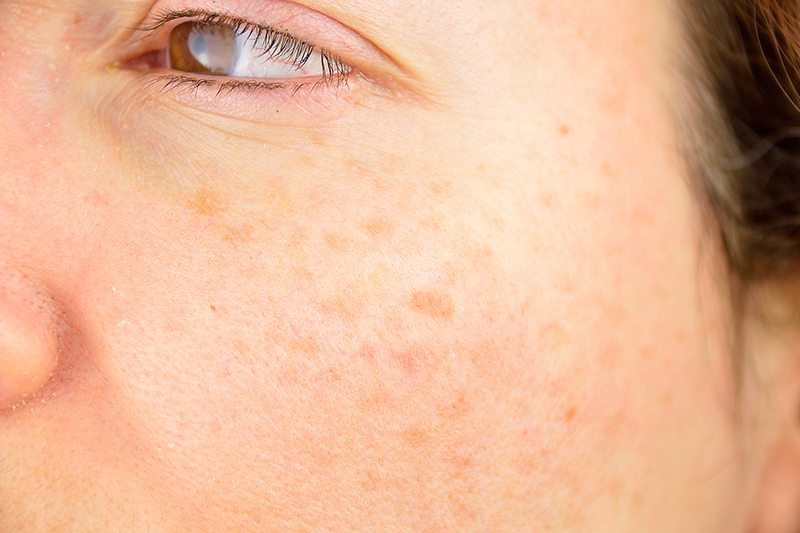Are dark skin spots cause for concern

Age spots, sometimes called liver spots and solar lentigines, are small dark areas of increased pigmentation on your skin. While they often come with age, should they be a cause for concern?
What causes age spots
They vary in size and usually appear in areas where with the most sun exposure, such as the face, hands, shoulders and arms. Individuals that spend a lot of time in the sun tend to get more of them and much sooner in life.
The use of commercial tanning lamps and tanning beds can also contribute to the development of age spots.
When to see a doctor
They don’t typically don't require medical care, however, if you see a spot that has changed in appearance, such as getting darker or larger, have a dermatologist evaluate it to rule out the possibility of it being a skin cancer.
How to help prevent them
The most important tool to age spots is sunscreen. “Apply a broad-spectrum sunscreen of at least SPF 30-50 about 15-30 minutes prior to going outdoors,” says Edward Prodanovic, MD, Assistant Professor of EVMS Dermatology.. “It’s important to apply sunscreen generously and reapply every two hours or more often if you're swimming or perspiring. Dr. Prodanovic also recommends avoiding the sun between 10 a.m. and 2 p.m. since the sun's rays are most intense during this time.
Another tip is to consider wearing clothing designed to provide sun protection. Look for clothes labeled with an ultraviolet protection factor (UPF) of 40 to 50. \
What can be done to remove them?
Age spots can be lightened for cosmetic reasons. Treatments include use of skin-bleaching products, cryotherapy, chemical peels, microdermabrasions and lasers.
Learn more about the spots on your skin by visiting the EVMS Aesthetic Center, the only cosmetic program in Hampton Roads that includes physician expertise from three specialties, Plastic Surgery, Facial Plastic Surgery and Dermatology.
Call 757.689.8258 to make an appointment.